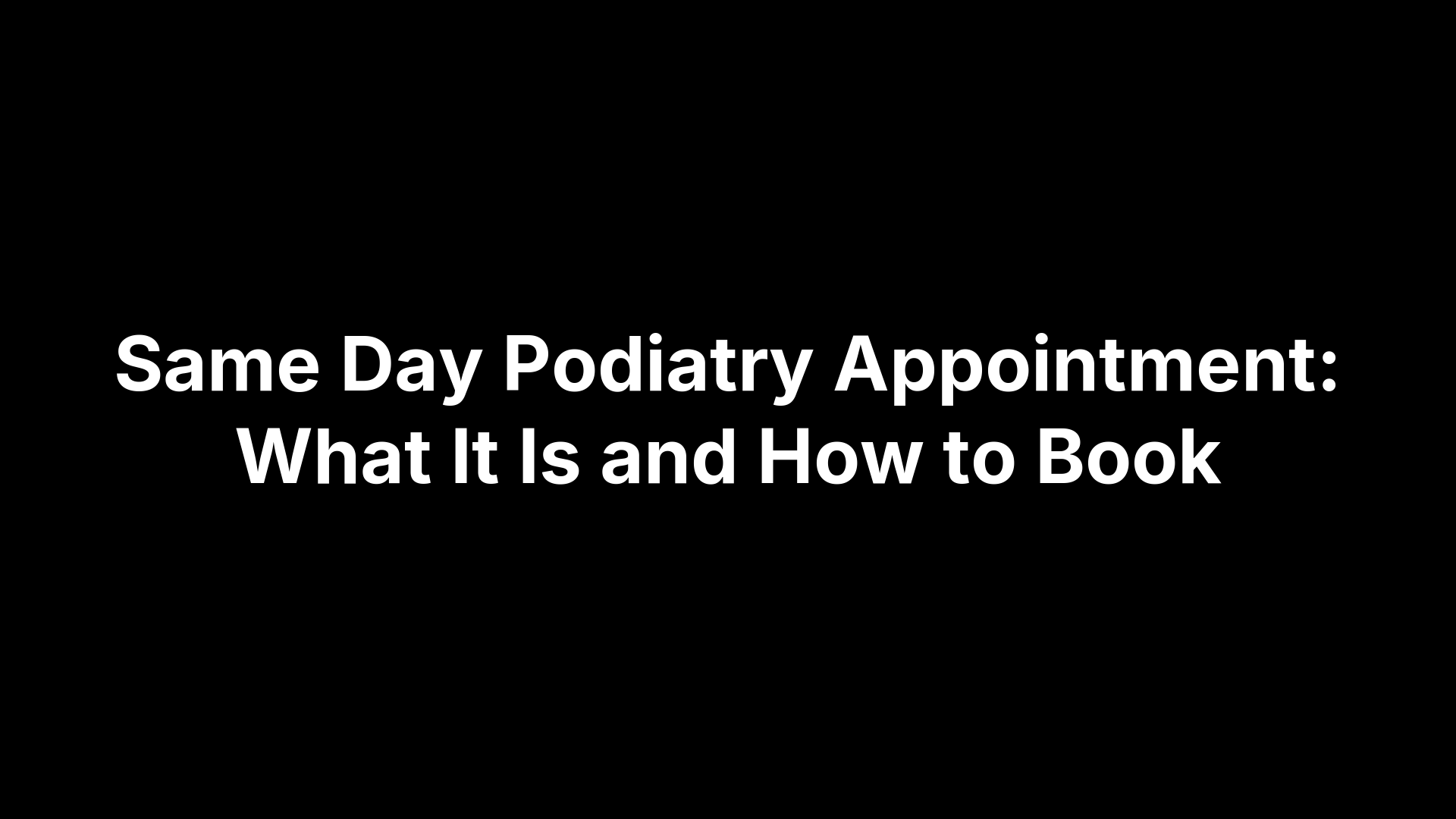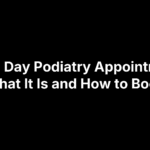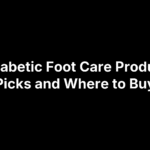Patient experience is the sum of everything a person encounters when seeking care—from the first phone call to schedule an appointment to the clarity of discharge instructions and follow-up support. It’s not just bedside manner; it’s access and wait times, how clearly clinicians communicate, whether care feels coordinated, how comfortable and safe the environment is, and whether patients feel respected, included in decisions, and confident about next steps. In short, it’s how care is delivered, not just what care is delivered—and it shapes trust, adherence, and outcomes across hospitals, clinics, and specialty practices like podiatry.
This guide explains what patient experience means in plain terms and why it matters. You’ll learn its core components, how it differs from patient satisfaction (and how both connect to outcomes), and how standardized CAHPS surveys—HCAHPS, CG-CAHPS, and OAS CAHPS—work. We’ll cover additional ways to measure experience, key touchpoints across the patient journey, practical improvements for clinics and surgery centers, the role of technology, and how equity and health literacy fit in, with examples from foot and ankle care.
Why patient experience matters in modern healthcare
When care feels seamless, respectful, and coordinated, patients engage. Research links stronger patient experience to better communication, higher adherence to treatment and medications, greater use of preventive care, and improved clinical outcomes—including lower complication and readmission rates. In other words, experience isn’t “soft”; it’s a driver of safety, quality, and healing.
It also shapes organizational health. Positive experiences strengthen reputation, boost staff morale, and are associated with better financial performance. Because CAHPS results are publicly reported—and HCAHPS can influence Medicare reimbursement—experience directly affects accountability and revenue. For outpatient specialties like podiatry, that impact is tangible: clear instructions and timely access help patients stick with offloading, orthotics, wound care, and post-op protocols, reducing avoidable complications and speeding recovery across clinics and surgery centers.
Core components of patient experience
Think of patient experience as the “how” of care delivery across every touchpoint. According to widely used AHRQ measures, what patients notice most are the interactions that help them access care, understand options, feel respected, and successfully manage their health between visits. In clinics and surgery centers, these core components show up as predictable behaviors and systems that remove friction and build trust.
- Communication with clinicians: Clear, compassionate explanations and active listening.
- Access and timeliness: Easy scheduling, reasonable waits, and convenient follow-up.
- Care coordination and transitions: Teams that share information and align plans.
- Courtesy, respect, culturally appropriate care: Personalized, bias-aware interactions.
- Getting information and literacy support: Plain-language instructions and teach-back.
- Shared decision making: Choices aligned with patient goals and values.
- Self-management support: Tools and coaching for home care and adherence.
- Physical environment: Clean, quiet, well-signed, and comfortable spaces.
Do these consistently, and experience improves—setting the stage for higher satisfaction and better outcomes.
Patient experience vs patient satisfaction (and how both relate to outcomes)
These terms are often used interchangeably, but they’re not the same. Patient experience describes what actually happened and how care was delivered—communication clarity, access, coordination, respect—typically captured with standardized, frequency-based questions (like CAHPS). Patient satisfaction reflects whether a person’s expectations were met. Two patients can receive identical care, report the same experience, and score satisfaction differently based on expectations.
Why does the distinction matter? Research associates stronger patient experience with better adherence, more preventive care use, fewer complications, and lower readmissions—measurable clinical gains. Satisfaction often follows great experience and influences loyalty and reputation. In foot and ankle care, clear instructions, timely access, and aligned goals help patients follow offloading, orthotics, wound care, and post‑op plans—boosting outcomes while naturally improving satisfaction.
How CAHPS works and which surveys apply (HCAHPS, CG-CAHPS, OAS CAHPS)
CAHPS (Consumer Assessment of Healthcare Providers and Systems) are standardized, AHRQ-developed surveys that ask patients how often key aspects of care occurred. Because questions and scoring are consistent, results support apples-to-apples benchmarking, public reporting, and quality improvement. For hospitals, HCAHPS scores are publicly reported and can influence Medicare reimbursement. For outpatient specialties like podiatry, CG-CAHPS and OAS CAHPS are most relevant.
- HCAHPS (Hospital): Inpatient stays. Focuses on communication, responsiveness, discharge information, and environment. Publicly reported; can affect Medicare payment.
- CG-CAHPS (Clinician & Group): Office/clinic visits. Measures access, communication, and care coordination—well suited to podiatry clinic encounters.
- OAS CAHPS (Outpatient/Ambulatory Surgery): Same-day surgery centers. Captures pre-op communication, staff interactions, discharge instructions, and post-op follow-up—ideal for foot and ankle surgery centers.
Ways to measure patient experience beyond CAHPS
CAHPS gives comparable benchmarks, but day-to-day improvement relies on faster, more granular signals. Pair standardized surveys with real-time, operational, and qualitative inputs that map to AHRQ’s experience domains (access, communication, coordination, respect) so you can spot friction early and fix it across clinics and surgery centers.
- Press Ganey surveys: Deeper, comment-rich insights to benchmark communication, access, and coordination.
- Net Promoter Score (NPS): A quick read on loyalty and word‑of‑mouth momentum.
- Real-time micro‑surveys (SMS/QR): Short check‑in, discharge, and post‑visit pulses to capture issues while they’re fresh.
- Access and timeliness metrics: Time‑to‑next appointment, in‑office wait times, call hold/abandon rates, and portal message response time.
- Open‑text analysis: Thematic review of patient comments to surface clarity, courtesy, and discharge‑instruction gaps.
- Digital journey signals: Portal logins, online scheduling completion, and form error rates to identify usability barriers.
Patient journey touchpoints to evaluate from first call to follow-up
Map the experience like a timeline and test each moment against access, communication, coordination, and respect. In outpatient podiatry and ambulatory surgery, details matter: how fast patients get in, how clearly offloading or wound care is demonstrated, and whether devices and authorizations arrive on time. Use the touchpoints below to find friction and fix it.
- First call/online scheduling: Responsiveness, insurance check, triage; offer same‑day when appropriate.
- Pre-visit prep: Reminders, e‑forms, what to bring/footwear, imaging orders.
- Arrival/check‑in: Signage/parking, wait‑time transparency, front‑desk privacy.
- Clinical encounter: Plain language, goals captured, shared decisions documented.
- Diagnostics/procedures: What/why, consent, comfort, expected costs.
- Discharge: Written instructions, teach‑back, wound/offloading demos, red‑flag symptoms.
- Meds/DME/orthotics: Prior authorization, fitting/training, pickup/delivery timelines.
- Follow‑up/results: 24–48h check‑in, portal access, coordination with PCP/referrer.
- Billing: Estimates up front, payment options, clear statements.
- Surgery center: Pre‑op readiness, anesthesia questions, ride‑home verified, next‑day call.
Practical ways to improve patient experience across clinics and surgery centers
Sustained improvements come from small, reliable behaviors built into everyday workflows. Focus on what patients feel most: timely access, clear communication, smooth transitions, respectful interactions, and confidence going home. The playbook below turns CAHPS-style domains into repeatable actions that work across multi-site clinics and ambulatory surgery centers.
- Standardize access: Clear triage rules, hold same‑day/urgent slots, and set wait‑time expectations up front.
- Make communication consistent: Use plain language, confirm understanding with teach‑back, and summarize next steps aloud.
- Own the handoffs: Assign a named contact, verify pre‑op readiness (meds/NPO/ride), and call 24–48 hours after visits or surgery.
- Support self‑care: Demonstrate offloading, dressing changes, or brace use; send simple written/visual instructions and supply lists.
- Smooth meds/DME/orthotics: Track authorizations, set delivery/pickup timelines, and fit devices on site when possible.
- Protect dignity and comfort: Keep areas clean and quiet, improve signage/wayfinding, and maintain front‑desk privacy.
- Practice service recovery: Train staff to listen, apologize, fix the issue now, and close the loop with a follow‑up.
- Huddle daily: Review access pressures, high‑risk patients, callbacks, and any barriers from the prior day.
- Close the feedback loop: Share patient comments/themes with teams, recognize wins, and post a few clear, unit‑level goals.
The role of technology in a better patient experience
Technology removes friction at key touchpoints and makes communication timely and clear. From EHRs and patient portals to telehealth and AI, digital tools strengthen access, coordination, and self‑management—the same domains CAHPS and AHRQ emphasize. In podiatry clinics and surgery centers, that means faster scheduling, safer transitions, and clearer home care.
- EHRs and portals: Instant results, secure messages, clear pre/post‑op and device‑care instructions.
- Telehealth visits: Triage sprains, review wound photos/video, complete quick medication follow‑ups.
- Automated reminders, e‑forms, and micro‑surveys: Reduce no‑shows, verify prep, fix issues fast.
- AI‑driven analytics: Predict risks, surface delays, prioritize outreach for high‑need patients.
Equity, access, and health literacy in patient experience
A great patient experience is not equitable by default—it’s equitable by design. Barriers like transportation, language, cost, disability, and digital access can derail even the best clinical plans. Because core experience domains include access, respect, and culturally appropriate care, building fairness into every touchpoint is essential to safety, trust, and outcomes.
- Remove access barriers: Offer same‑day/urgent slots, extended hours, telehealth, and clear triage for high‑risk needs.
- Provide language access: Use qualified interpreters, translate key materials, and identify bilingual staff.
- Design for health literacy: Use plain language, visuals, and teach‑back; simplify dosing and device instructions.
- Address affordability: Give estimates, discuss alternatives (e.g., generics), and assist with authorizations.
- Close the digital divide: Make portals mobile‑friendly, send SMS reminders, and use QR codes for instructions.
- Support transportation and mobility: Share ride options, accessible entry details, and curbside pickup for devices.
- Ensure disability inclusion: Offer large‑print materials, assistive tools, and quiet spaces when possible.
- Partner with community resources: Coordinate referrals to free clinics and local support services.
These practices shrink gaps that disproportionately affect patients managing foot wounds, neuropathy, or post‑op offloading—where clarity, access, and support determine healing.
What patient experience looks like in podiatry and outpatient foot and ankle care
In podiatry and outpatient foot and ankle care, patient experience is felt in the small moments that determine healing: getting in fast when an ankle sprain happens, seeing your X‑rays explained in plain language, and leaving with clear, doable home instructions. At a comprehensive practice, the “how” of care—access, communication, coordination, and comfort—turns complex treatments into confident next steps.
- Same‑day access: Appointments across Central Virginia when pain or injury strikes.
- Clarity at diagnosis: Digital imaging explained simply with step‑by‑step plans.
- Precision procedures: Ultrasound-/fluoroscopy‑guided injections and outpatient surgery with clear prep/aftercare.
- Hands‑on support: Fitting and instruction for braces, custom orthotics, and offloading.
- Ongoing follow‑through: Diabetic foot and advanced wound care with Healow portal check‑ins.
Key takeaways
Patient experience is the “how” of care—access, communication, coordination, respect, and clear next steps—and it’s tied to safety, adherence, and outcomes. Use CAHPS for standardized benchmarking, pair it with real-time signals, map the journey from first call to follow-up, and build equity and literacy into every touchpoint. In foot and ankle care, those fundamentals turn complex treatment into confident self-care.
- Define the “how”: Focus on access, communication, coordination, respect, and environment.
- Measure smart: Combine CAHPS with NPS, micro-surveys, and operational metrics.
- Fix the journey: Stress-test first call, discharge, devices/orthotics, and follow-up.
- Standardize behaviors: Teach-back, named contacts, timely callbacks, and service recovery.
- Leverage technology: Portals, telehealth, reminders, and analytics to remove friction.
- Build equity in: Language access, plain language, affordability, and accessibility.
Need trusted podiatry care that puts experience into action? Visit Achilles Foot and Ankle Center for accessible, coordinated foot and ankle care across Central Virginia.






